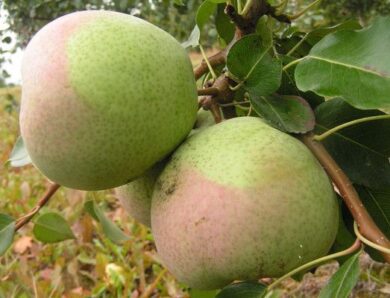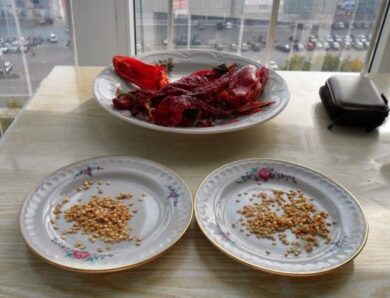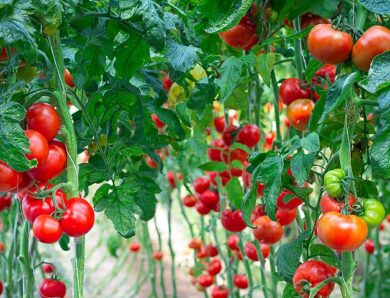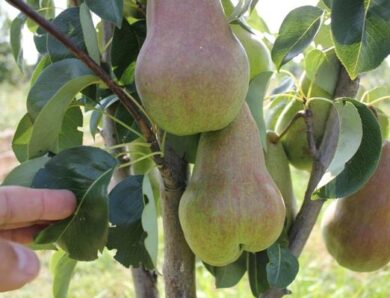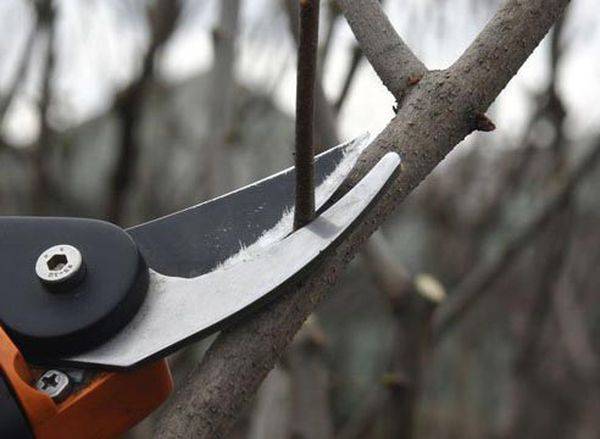
Formation of the pear crown: pruning rules and scheme
The formation of the pear crown is an important procedure, if not vital for a fruit tree. Especially if the gardener wants to collect a regular rich harvest. Pear pruning is done in different seasons and pursues different goals. Do you want to know which ones?? Then read on.
Why do you need to form a crown
As soon as the pear you planted enters the fruiting period, it needs regular formative pruning. And it's not just about that, that it is much easier to harvest from the branches of a formed tree - you will also notice a significant increase in the number of fruits. in addition, this procedure will benefit the plant itself:
- culture is rejuvenated;
- the branches are strengthened;
- if you regularly cut the pear crown, you will manage to form her high-quality skeleton;
- the formation of the pear crown has a beneficial effect on the condition of the bark;
- with the help of this procedure, it is possible to extend the period of active fruiting;
- more sunlight reaches the ovaries;
- the taste qualities of fruits improve, they themselves increase in size;
- crowning has curative properties - the procedure is a preventive measure against diseases, carried by pests, that live in the cracks of the bark.
If you neglect the pruning procedure and do not carry out regular formation of the crown, your pear will last for several years, to go wild irrevocably.
One more problem, which almost all gardeners face, - these are wolves. These are powerful lateral shoots (are formed on skeletal branches), which are subject to deletion. Before forming the pear crown, be sure to check the presence of tops - we remove them first. Lupus never bear fruit, but only thicken the crown, depriving the trees of their vitality. The most powerful leaves always develop on the tops, which also feeds on plant juices.
It is easy to recognize wolfberries - they almost always grow strictly vertically.
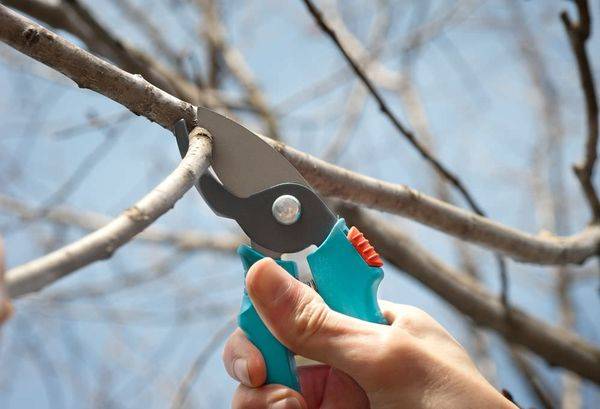
Kinds and purposes crowned
Regardless, how old is your tree, its crown is formed in two main ways - by thinning (when twigs are removed directly at the base) and shortening (when only part of the fruiting petiole is cut, so that the branches become thicker and rejuvenated).
As for the main goals of the procedure, then them 3:
- Formation. Creation of a clear shape of the crown of a young pear.
- Support. We keep yield indicators, we take care of the health of the tree.
- Rejuvenescence. Extension of the fruiting period of the crop.
Features of winter pruning
Any manipulations, related to circumcision, it is better not to spend in winter. But if you are serious about working in the garden, it is better to do it in February, choosing a relatively warm day, when the air temperature does not drop below -15 °C. It is advisable to start with those trees, which are already several years old - in such plants, the kidneys wake up much earlier.
Features of spring pruning
Most experienced gardeners agree, that spring pruning of fruit crops is optimal. During this period, the pear leaves have not yet woken up, sap movement is practically absent, accordingly, it will be easier for the tree to overcome the consequences of the procedure. You need to choose the time for manipulations as follows, to protect your garden from sudden frosts and strong temperature fluctuations.
How and when to prune a pear in the spring, will depend on that, in which region it grows. So, in southern gardens, this procedure is carried out in the first two weeks of March, in the middle lane of Russia and further east - no later than the first days of April.
Older pear seedlings tolerate spring pruning best 1-2 years. The following scheme is practiced for all other trees:
- remove all branches and shoots, on which clear signs of freezing are visible;
- we remove all the shoots, that grow incorrectly or crookedly;
- shorten the trunk - about 25%.
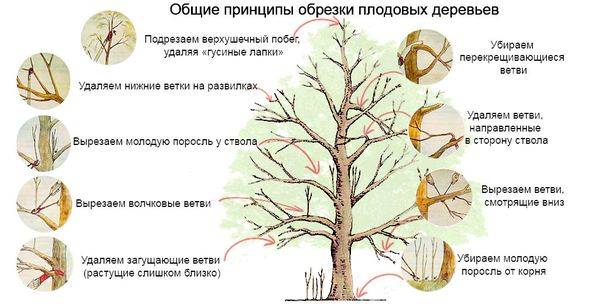
After such manipulations, the active development of the side shoots of the tree begins, those kidneys wake up, which are located below the slices.
Features of summer pruning
Pear trees should be pruned in the summer only if necessary. Such manipulation is allowed no later than June, at the same time, only damaged branches or excessively vigorous young shoots can be removed, without resorting to radical formative measures.
Features of autumn pruning
Autumn manipulations with the crown are of a sanitary nature. All dried twigs are removed from the tree, one-year whips are cut by about a third. It is important to choose the right time: there should be no frostbite in the next three weeks after the procedure, therefore, try to cope with all manipulations in early September.
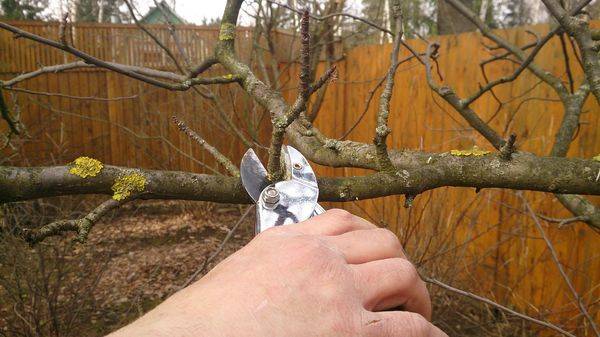
Pruning seedlings, young and old trees
For the first time, after planting, pear seedlings are to be pruned in autumn. The first bud should be selected on the main shoot, from which we will determine the shoots, which are subject to pruning. Three ovaries, located above the first kidney, also need to be cleaned. Now we find the fifth kidney, located on the opposite side of the trunk - it will become the basis for the second branch of the crown skeleton. And here are the kidneys from 6 on 8 should be removed.
In the second year after planting, young pears should be shortened by about a quarter of their height. in addition, it is necessary to remove all branching shoots, cutting them to the first kidney.
In the next few years, all pruning manipulations will be identical - you form the crown and carry out sanitary cleaning. From about the fifth year of the tree's life, the growth of side shoots will gradually stop, therefore, the intensity of work decreases. The closest 5-7 years, you have only sanitary pruning for purely healing purposes.
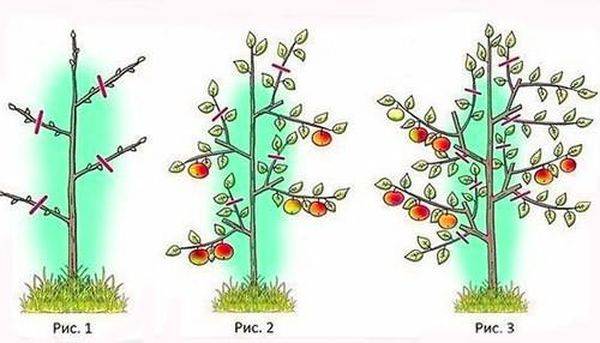
Crown formation columnar pear
Cultivation of columnar fruit trees in our country is rapidly gaining popularity - it is customary to plant them on almost every homestead. Planting and caring for a columnar pear does not differ in complexity with one exception - trees need regular pruning.
Before starting the procedure, look carefully at the top: if the kidney is healthy, the tree is the central conductor; if not, you should choose the strongest lateral shoot, removing all others. In a young seedling, it is better to shorten the side shoots - this way you will not provoke their intensive growth.
Now you know what to do, so that your pear garden is always generous with harvest.
Video "Formation of the crown of a pear"
In this video you will learn about it, how to properly form the crown of a pear.

